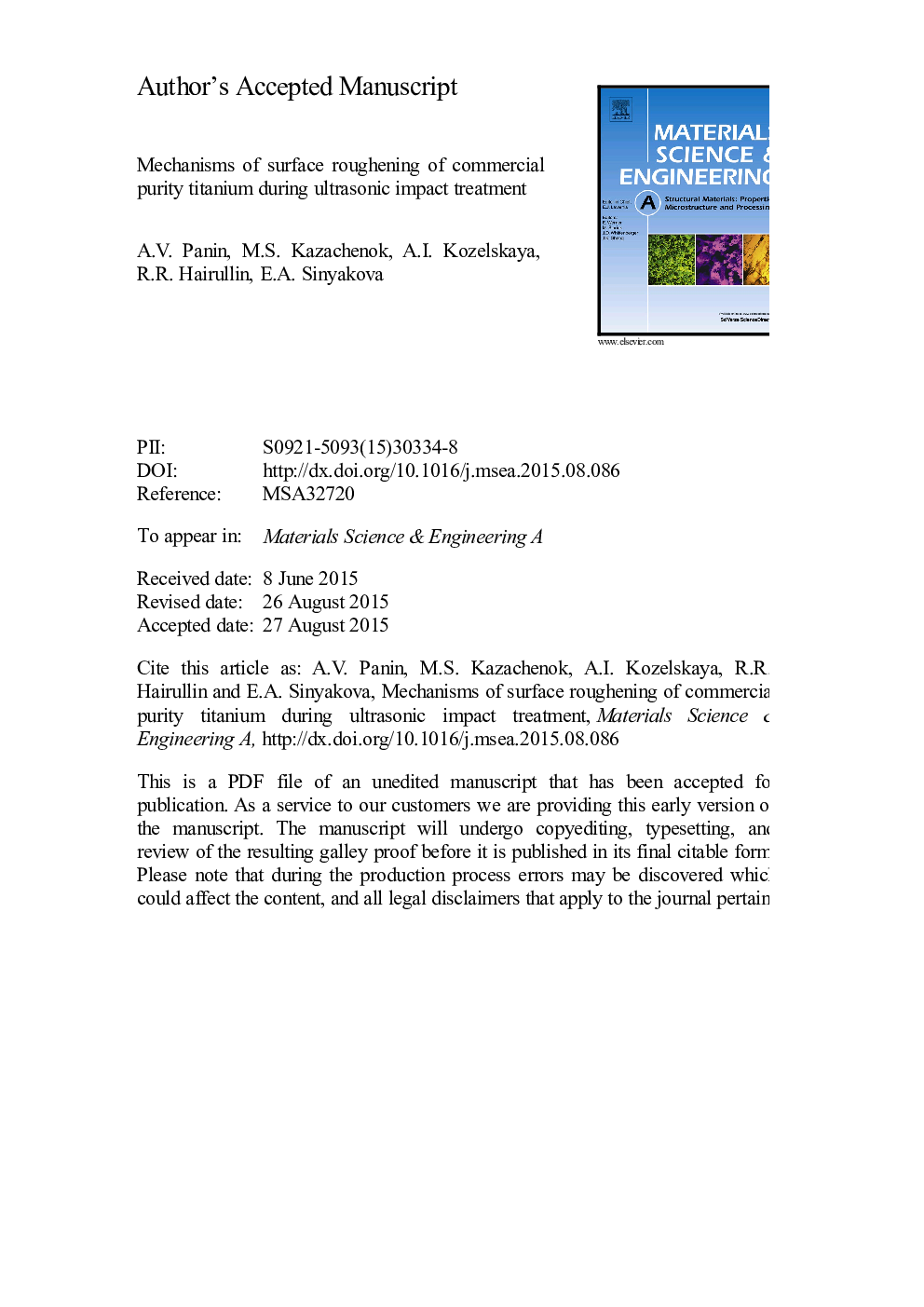| Article ID | Journal | Published Year | Pages | File Type |
|---|---|---|---|---|
| 1573953 | Materials Science and Engineering: A | 2015 | 11 Pages |
Abstract
Using atomic force microscopy, electron backscatter diffraction and scanning electron microscopy, it is shown that surface roughening of commercial purity titanium specimens subjected to UIT is a multilevel process. It is found that the impact action of a striker and microasperities on its surface results in the formation of pile-ups of various shapes and sizes. The role of dislocation glide and twinning in deformation of commercial titanium is studied. The interaction of the primary slip bands and the secondary ones among themselves and with twin boundaries as well as the interaction between twins are demonstrated. The mechanisms of secondary twinning developing in the grains of the surface layer are revealed. Convex bending of the titanium plate caused by the relaxation of the compressive stresses essentially effects on the deformation mechanism of its surface layers. It is found that the structure fragmentation of the surface layer of the titanium plate is different during one-sided and double-sided treatment.
Related Topics
Physical Sciences and Engineering
Materials Science
Materials Science (General)
Authors
A.V. Panin, M.S. Kazachenok, A.I. Kozelskaya, R.R. Hairullin, E.A. Sinyakova,
